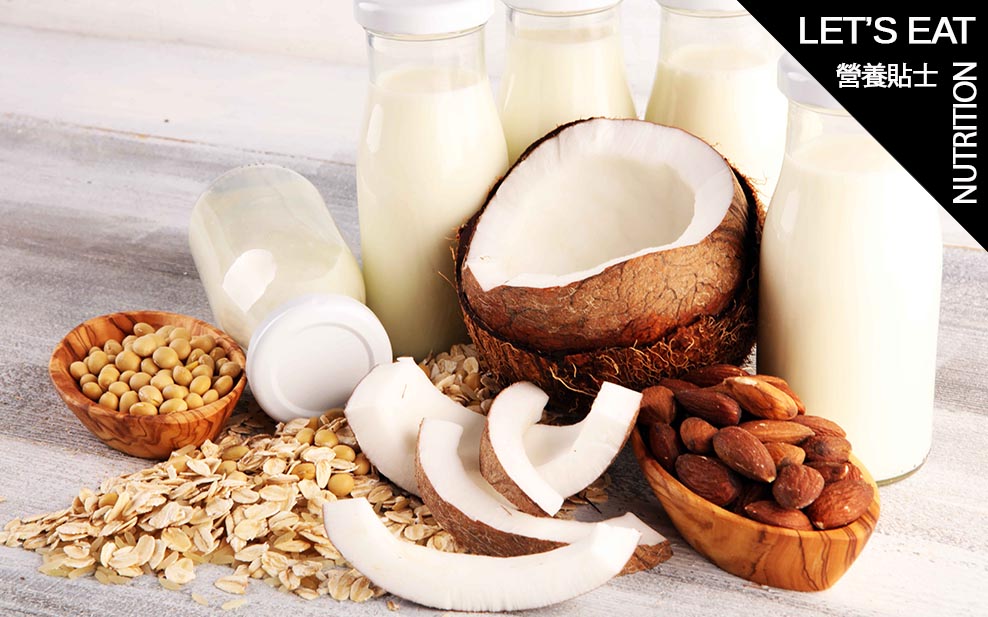
Pick your Plant Milk: Which Dairy Alternative is Best for the Environment?
It’s well known by now that animal agriculture is bad for the environment and the dairy industry is no exception. There are over 270 million dairy cows in the world, each one burping 250-500 litres of planet-heating methane per day. The British dairy industry alone uses 40.9 billion litres of water per year and 34.1 million acres of land is used to grow cow feed in the USA.

Fortunately for those who want to help the planet without having dry cereal for breakfast, greater awareness of these impacts has fueled a greater demand for and availability of plant-based milks, which overall use nine times less land and emit three times less carbon than dairy farming. Nowadays, it’s easy to find a wide range of these milks –from soy to hemp to coconut– in our supermarkets, restaurants and cappuccinos.
That said, some plant-based milks can have their own –sometimes quite serious–environmental drawbacks. To help you make an informed choice, we have compiled a list detailing the environmental pros and cons of some of the most common plant milks.
Almond Milk

Unfortunately, one of the most popular plant-based milks is one of the most environmentally damaging. While almonds do have a very small carbon footprint, they are extremely water-demanding, requiring 5 litres per nut. This is a big problem given that 80% of the world’s almonds are grown in drought-stricken California, where farmers are extracting water from the state’s underground aquifers much faster than it can be replenished.
American almonds are also terrible for bees. Because native bees cannot reliably pollinate them, large numbers of European honeybees (which outcompete the native bees) are imported to do it instead. However, the crop fields of California and especially the almond orchards are heavily sprayed with pesticides and being concentrated within a relatively small area also increases the risk of disease transmission. As a result, beekeepers have been reporting record bee die-offs, with 50 billion being wiped out during the 2018-19 almond season.
Coconut Milk

At first glance, coconut milk seems to be a good choice for the environmentally conscious drinker. Coconut trees use relatively little water, are good absorbers of carbon dioxide and if grown sustainably alongside other food crops and wild plants, can even provide good habitat for wildlife.
However, with a growing demand for coconut products in developed countries, commercial farmers are increasingly having to grow coconuts in monocultures to maximise yields. And because the trees become less productive with age, farmers have to keep planting more to keep up with demand. But growing only one type of crop on the same land year after year leads to soil nutrient depletion, which then forces farmers to use harmful chemical fertilisers.
Soy Milk

Among the crops used for plant-based milk, soy is one of the least water demanding, requiring only 5.6 litres for a single 200 ml glass (compared to 74.3 litres for the same amount of almond milk). Moreover, pulses like soy beans are able to increase the nitrogen content of soil, removing the need for harmful nitrogen fertilisers.
Recently, soy beans have been getting bad press due to the fact that large parts of the Amazon rainforest are being destroyed to grow them. But the overwhelming majority of such soy beans are used to feed livestock, while only 35% of the 6% of soy beans produced globally for human food products are used for soy milk. Soy beans are also grown deforestation-free in other countries, so when buying soy milk, check the box to see if the beans were grown organically in the US or Canada.
Hemp Milk

Those concerned about climate change should not turn their noses up at this lesser-used plant milk, as hemp can absorb 15 tons of carbon dioxide per hectare (in other words, 4 times more than trees). Being so small, it doesn’t need much land to grow, thus avoiding the habitat destruction caused by crops like soy. Hemp is also excellent for improving soil health, as it is able to de-toxify even soils contaminated by heavy metals and can be grown without the use of pesticides.
Oat Milk

Oat milk has one of the lowest environmental impacts of all the plant-based milks, using 60% less energy, 80% less land and producing 80% less greenhouse gases than dairy. It is often grown in cooler countries where agriculture doesn’t cause deforestation and during the winter. The latter quality allows cropland to absorb carbon and provide habitat for wildlife at a time when it would otherwise be bare. Moreover, planting oats on land previously used to grow other crops increases soil nutrient diversity.
One major downside to oat milk is that many oats are produced in monocultures that are treated with pesticides containing glyphosate, which is not only deadly for bees but has also been linked to cancers in humans. However, practices do vary between oat suppliers, with some taking a stronger stand against their growers using glyphosate than others.
Pick your Plant Milk
Very few things in life are perfect and the same is sadly true of plant-based milks. But whatever their environmental flaws may be, they are all far less damaging than dairy. As a consumer, it’s really just a question of making informed choices to pick whichever milk we feel is most acceptable, from both an environmental and a taste standpoint.
Want more information about plant based eating in Hong Kong? READ: 5 Local Farms Selling Fresh Produce in Hong Kong.
Written exclusively for WELL, Magazine Asia by Thomas Gomersall

Thank you for reading this article from WELL, Magazine Asia. #LifeUnfiltered.
Connect with us on social for daily news, competitions, and more.





